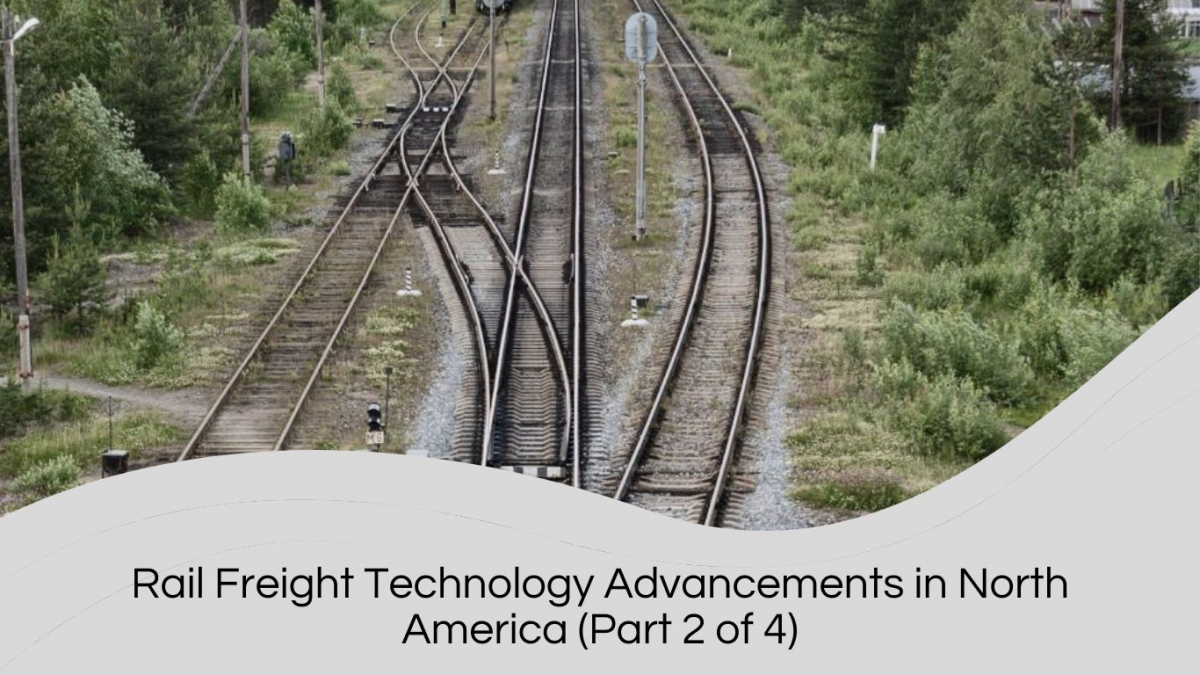Internet of Things (IoT): The rail freight industry in North America has enthusiastically embraced a plethora of technological advancements that are revolutionizing rail freight operations, ushering in a new era marked by increased efficiency, heightened safety, and a deeper commitment to sustainability. Among these transformative innovations, the Internet of Things (IoT) takes center stage. By interconnecting an extensive array of devices, sensors, and systems across the rail network, IoT plays a pivotal role in collecting, sharing, and meticulously analyzing real-time data. Within this context, IoT devices integrated into rail cars, railway tracks, and the transported cargo itself are the unsung heroes, continuously monitoring performance metrics, tracking precise locations, and meticulously gauging cargo conditions. For instance, IoT ensures perishable goods are maintained at optimal temperatures throughout the journey, preserving their quality and market value. Beyond these immediate benefits, IoT enables proactive decision-making by allowing logistics professionals to predict and address potential disruptions or malfunctions long before they escalate into critical issues. Consequently, this technology-driven transformation not only enhances operational efficiency and reliability but also fosters a greener and more sustainable future for rail freight. In this article, we'll delve deeper into the multifaceted world of technological innovations in the rail freight industry, shedding light on both the positive aspects and the challenges faced by this rapidly evolving sector.
Blockchain Revolutionizing North American Rail Freight: In the rapidly evolving North American rail freight industry, Blockchain technology has emerged as a transformative force, offering transparency and immutable security. It redefines how rail logistics are managed, providing a trustworthy and unalterable record of transactions, eliminating data discrepancies. By establishing a decentralized, tamper-proof ledger, Blockchain fosters trust among stakeholders, streamlines contractual processes, and enhances overall business efficiency.
Yet, the impact of Blockchain goes beyond records and transactions. It revolutionizes how industry players interact, share data, and collaborate, leading to a safer, more efficient, and sustainable future. This integration demonstrates the industry's commitment to innovation and adaptation, ensuring data security and fostering a more interconnected and responsive rail freight network. Embracing Blockchain positions the industry at the forefront of technological advancements, shaping a more reliable, efficient, and collaborative future.
Advanced Analytics and Big Data: Maximizing Efficiency and Reducing Costs
Railroads in North America are leveraging advanced analytics and big data to optimize operations, predict maintenance needs, and improve asset utilization. These technologies enable rail carriers to make data-driven decisions that maximize efficiency and reduce costs.
By collecting and analyzing vast amounts of data from various sources, such as train sensors, weather forecasts, and historical performance records, railroads can gain valuable insights into their operations. Advanced analytics enable better forecasting of demand, which allows rail carriers to allocate resources more effectively and optimize train schedules accordingly. This reduces the risk of overcapacity or underutilization, maximizing efficiency and reducing costs.
Moreover, predictive maintenance algorithms help identify potential equipment failures before they occur, minimizing disruptions and improving overall operational reliability. By detecting maintenance needs proactively, rail carriers can plan maintenance activities more efficiently, reducing downtime and increasing asset availability.
Autonomous Technologies: Potential Benefits and Challenges
The rail freight industry is also exploring the potential of autonomous technologies to further enhance efficiency and safety. Research and development efforts are underway for autonomous locomotives and drones for maintenance and inspections.
Autonomous locomotives have the potential to optimize operations by leveraging advanced sensors, artificial intelligence, and computer vision. These locomotives can operate with greater precision, optimizing fuel consumption and reducing emissions. Additionally, autonomous technology can improve safety by continuously monitoring the surrounding environment and responding quickly to potential hazards.
However, the widespread adoption of autonomous technologies in the rail freight industry faces challenges. Infrastructure upgrades are necessary to support autonomous operations, including the installation of advanced communication systems and the development of dedicated autonomous corridors. Regulatory frameworks need to be established to address liability, safety standards, and operating protocols.
Positive Train Control (PTC): The implementation of Positive Train Control (PTC) systems in the North American rail industry has not been without criticism. While PTC enhances safety by preventing accidents and reducing human errors, it presents substantial financial and operational challenges. The costs of PTC infrastructure and integration complexities have strained rail carriers, raising concerns within the industry. However, it's crucial to recognize that PTC remains a crucial advancement in rail safety.
Precision Scheduled Railroading (PSR): The adoption of Precision Scheduled Railroading (PSR) by major North American rail carriers has drawn both praise and criticism. As the rail industry moves into the post-PSR era, concerns have arisen about the trade-off between efficiency and service quality. Critics argue that PSR's relentless focus on cost reduction and profitability may come at the expense of customer satisfaction. Balancing these concerns while reaping the efficiency gains is a central challenge in the industry's evolving landscape.
In conclusion, the rail freight industry in North America is undergoing a transformation through the adoption of advanced technologies. While challenges and criticisms exist, these innovations are driving increased safety, efficiency, and sustainability in rail operations.

